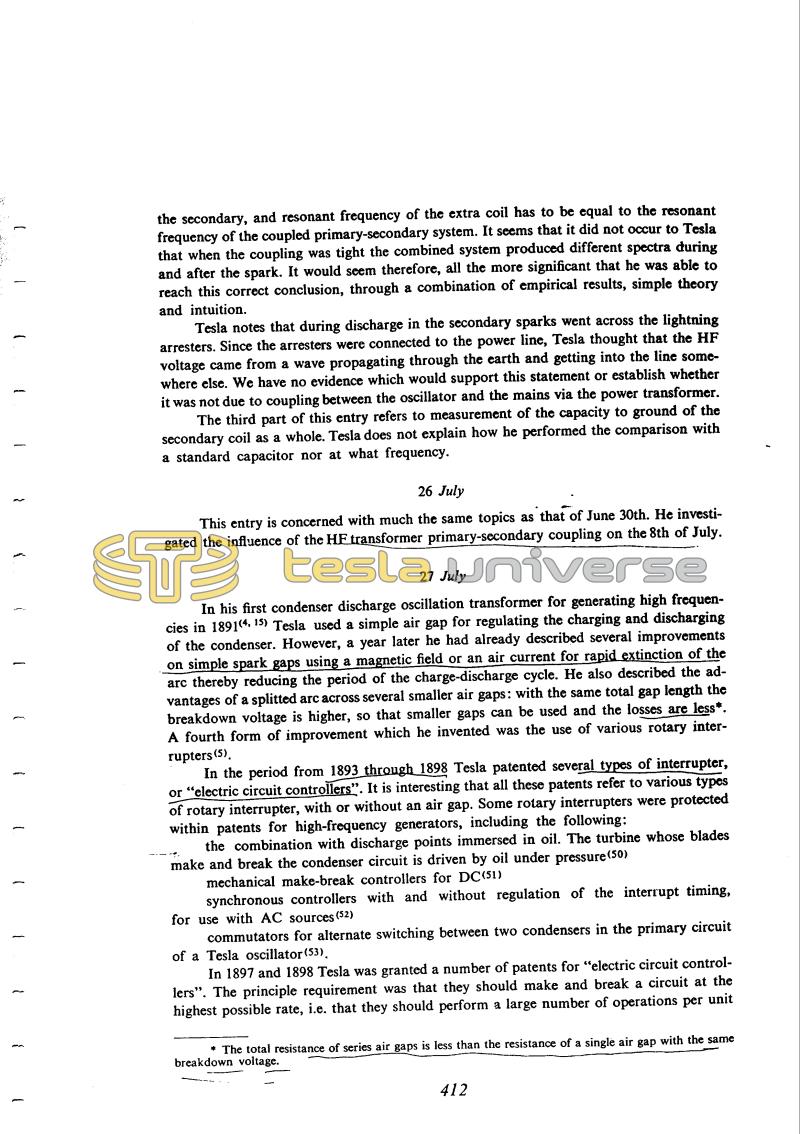July 27
In his first condenser discharge oscillation transformer for generating high frequencies in 1891(4, 15) Tesla used a simple air gap for regulating the charging and discharging of the condenser. However, a year later he had already described several improvements on simple spark gaps using a magnetic field or an air current for rapid extinction of the arc thereby reducing the period of the charge-discharge cycle. He also described the advantages of a splitted arc across several smaller air gaps: with the same total gap length the breakdown voltage is higher, so that smaller gaps can be used and the losses are less*. A fourth form of improvement which he invented was the use of various rotary interrupters(5).
In the period from 1893 through 1898 Tesla patented several types of interrupter, or "electric circuit controllers". It is interesting that all these patents refer to various types of rotary interrupter, with or without an air gap. Some rotary interrupters were protected within patents for high-frequency generators, including the following:
the combination with discharge points immersed in oil. The turbine whose blades make and break the condenser circuit is driven by oil under pressure(50)
mechanical make-break controllers for DC(51)
synchronous controllers with and without regulation of the interrupt timing, for use with AC sources(52)
commutators for alternate switching between two condensers in the primary circuit of a Tesla oscillator(53)
In 1897 and 1898 Tesla was granted a number of patents for "electric circuit controllers" The principle requirement was that they should make and break a circuit at the highest possible rate, i.e. that they should perform a large number of operations per unit


